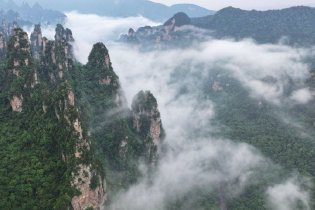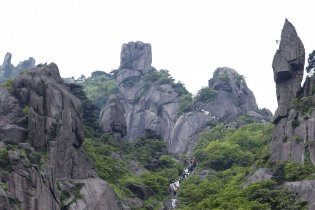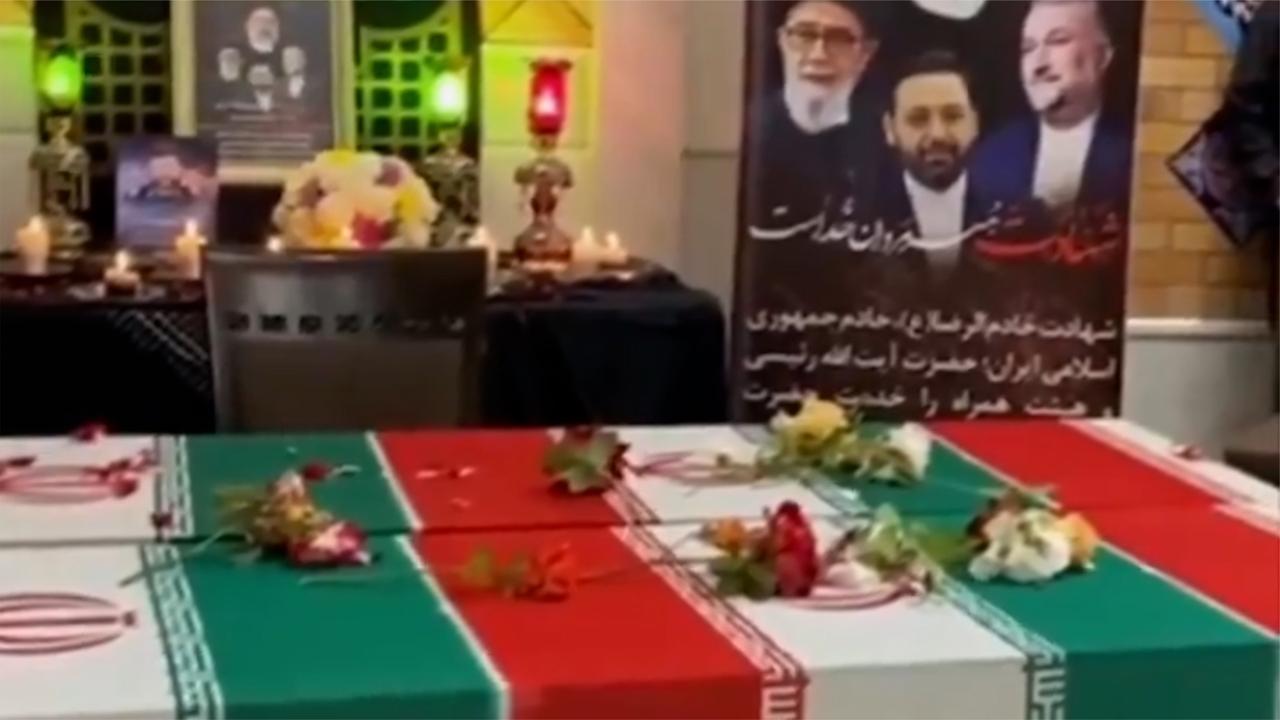Dunhuang is a shining pearl in the long history of the world, which is of great significance to the Chinese civilization and even the world civilization. Dunhuang has a harsh environment and a small population. In ancient times, people were productive forces. Dunhuang, a place on the northwest edge of China with a small population, would never be the richest place, but it became a "capital of China Rong" and created a brilliant cultural civilization, which is worth thinking about.
Inherit and carry forward the development of Dunhuang
Fighting spirit
All dynasties recognized the importance of Dunhuang as a national gateway, transportation hub, and economic and trade center, and took it as an unshirkable historical mission and responsibility to explore Hexi, manage the Western Regions, and develop westward. For the management of Dunhuang, successive dynasties took multiple measures at the same time, namely, economic preference, political coordination and cultural tolerance. Throughout the dynasties' strategies for Dunhuang and the border areas, due to the limitations of the times, the understanding of current interests and long-term interests, local interests and overall interests may not be clear and profound enough, and there will inevitably be gains and losses. However, it is undeniable that the indomitable spirit of struggle has always profoundly affected generations of Chinese people, It urged them to devote themselves to the great cause of frontier development.
Before Emperor Wu of the Han Dynasty, Hexi and the Western Regions, with Dunhuang as the center, had been the only places on the road of east-west communication. Yuezhi and Wusun had multiplied here, and later became the home of the Huns and the Han Dynasty. Yueshi shoulders the important task of the Jade Road, the predecessor of the Silk Road. Hetian Jade and the jade near Dunhuang passed through them to the Central Plains. The jade unearthed in Henan Yin Ruins and Jiangsu Xuzhou came from the far northwest. In the era of underdeveloped transportation, it is conceivable that the ancestors made great efforts to achieve exchanges and exchanges between the East and the West. How long will it take for generations of people to travel along the long Silk Road from 30 miles, 50 miles, or 70 miles a day to gradually accumulate into the 10000 mile Silk Road? What's more, there are deserts and gobi, mountains and rivers across it. If there is no indomitable spirit of struggle, it is bound to return without success. But generations of ancestors have completed the great cause of managing the northwest, opening up new frontiers and rebuilding prosperity, and achieved exchanges and exchanges between eastern and western civilizations. How can we not be admired!
Inherit and carry forward the construction of Dunhuang Grottoes
Craftsmanship
Ancient Dunhuang people had different forms of spiritual beliefs, and cave building and praying often became an important activity in their secular life. Due to the long history, the specific number of jobs required for the excavation of Dunhuang caves has not been handed down in full detail, but it is not easy to open caves on the cliff. As the main builders of caves, craftsmen need to complete excavation, decoration, painting, sculpture and other work according to the requirements of employers. According to the unearthed documents of the Sutra Cave, the craftsmen who built the grottoes at that time had a fine division of labor, low treatment and difficult life. In such a tough environment, they still kept improving to complete each mural and statue, which was the work of countless craftsmen. It is precisely because of the attitude of craftsmen of all ages to strive for perfection and their pursuit of perfection that the charm of Dunhuang Grottoes has been passed down for thousands of years and has been handed down to this day.
There are two major branches of Dunhuang Studies, one is the study of the unearthed documents in the Sutra Cave, and the other is the study of Dunhuang grotto art. The significance of the Sutra Cave to Dunhuang is incomparable. Because of the discovery of the Sutra Cave in Dunhuang, Dunhuang studies suddenly became an international outstanding study, and became the object of sinology research around the world. However, even without the discovery of the Sutra Cave, the value of the art of Dunhuang Grottoes cannot be ignored. Such a magnificent and splendid art of caves is absolutely a treasure house. The pious Tibetan prince, the busy Sogde merchant, the beautiful Uighur princess, even the humble maids, farmers and children are still beautiful for thousands of years. But the names of the creators of these amazing masterpieces are almost unknown, and there is no material to test. However, there is no doubt that they are the descendants of ancient Chinese people and the inheritors of the craftsman spirit of the Chinese nation.
Inherit and carry forward the scientific spirit in the study of Dunhuang
Dunhuang Studies has been an international discipline since its birth. Scholars from Britain, France, Russia, Japan and other countries have made great achievements in the study of Dunhuang Studies. Under such circumstances, Chinese scholars are unwilling to be left behind and catch up. From Mr. Luo Zhenyu and Mr. Wang Guowei's initial literature collection, collation and publication, to the constant emergence of summary works, and then to the introduction of pioneering works in important fields, over 120 years, the Chinese scholars studying Dunhuang Studies have been growing and made a series of important achievements. Especially in terms of young talents, we have cultivated a batch of young and middle-aged research talents, who are growing into rising stars and regenerative forces in China's Dunhuang studies. Today, Chinese scholars have rich research achievements in many fields of Dunhuang Studies, and have gradually mastered the leading power and discourse power of international Dunhuang Studies. This long and arduous journey not only reflects the scientific spirit of seeking truth and pragmatism of Chinese Dunhuang scholars, but also shows the patriotism and family and country feelings of Chinese Dunhuang scholars.
For example, in the study of the reasons for the closure of the Sutra Cave, several generations of scholars have united their efforts to explore the hidden causes, and the historical truth has been revealed more and more clearly. From the theory of refuge to the theory of abandonment, from the theory of Buddhist offerings to the theory of destroying the law, to the theory of Buddhist sutra repair of Taoist Dharma Master, all of them reveal the scientific spirit of Dunhuang studies, and all of them are the voices and figures of older scholars who seek the truth. The same is true of the investigation on the time when Dunhuang conquered Tibet. The main conclusions are the 12th year of Dali (777), the 2nd year of Jianzhong (781), the 1st year of Zhenyuan (785), the 2nd year of Zhenyuan, the 3rd year of Zhenyuan and the 4th year of Zhenyuan. What each statement shows is not meaningless trivial textual research, but the scientific spirit of Dunhuang scholars to pursue truth and explore the truth. The richness and diversity of Dunhuang Sutra Cave documents and cultural relics are unparalleled, which are extremely important for the study of history, archaeology, ethnology, art and other disciplines. The exchanges and exchanges between different nationalities in Dunhuang and the coexistence of multiple languages are of great research value. Since modern times, generations of Dunhuang scholars have stuck to the desert, been willing to contribute, forge ahead, and forge ahead, constantly digging into the philosophy, humanistic spirit, and values behind Dunhuang culture and historical sites, not only promoting the prosperity and development of Dunhuang studies, but also promoting the creative transformation and innovative development of excellent traditional Chinese culture, It not only reveals the cultural spirit, cultural mind and cultural self-confidence of the Chinese nation, but also provides spiritual support for upholding and developing socialism with Chinese characteristics and building the modern civilization of the Chinese nation in the new era.
In short, Dunhuang culture is the crystallization of long-term exchanges and integration of various civilizations. The Silk Road centered on Dunhuang is not only a trade road across Eurasia, but also a road of civilization and dialogue to promote friendly exchanges between Asian and European countries and China. Only by understanding Dunhuang and the Silk Road can we understand the development history of the ancestors of Dunhuang and the Silk Road, and understand how the ancestors of many ethnic groups formed the Chinese nation with a long history, splendid culture and patriotic unity in the vast and long history of the great motherland, To safeguard the reunification of the motherland and promote the common progress, development and prosperity of all ethnic groups along the Silk Road. Cherish our own culture, respect the culture of other nations, and emphasize equal exchanges, harmony and inclusiveness between different civilizations, learn from each other's strengths, and seek common ground while reserving differences. Only in this way can the ancient Silk Road radiate new vitality and vigor.
(The author is a professor at the Dunhuang Research Institute of Lanzhou University)
Reviewed by: Li Jianjun
Editor in charge: Yu Shihua
Network editor: Wang Yanqing















